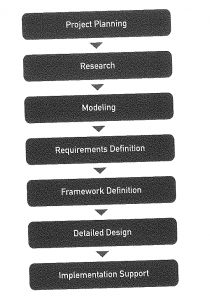“Design is the craft of visualising concrete solutions that serve human needs and goals within certain constraints”
Often we work with a blank canvas and accordingly to the design brief, it changes constantly before reaching the “end product”. Often, we have to work with knowledge from both science and art as well, it is almost impossible to do it without one. Also, whenever we create something or craft something out, we have to take in mind its purpose, what it is being used for, who it is being created for? With these in mind, we can then effective reach our target audiences. Within certain constraints suggests that is no such thing as unconstrained design which is true in the reality we live in. There is no way one can create something without any constraints such as time, money, materials.
“Goal-directed design” was also mentioned in this reading – principles, patterns, process & practices. Principles being guidelines for creating good solutions under specific circumstances but what is appropriate to one context may not apply to another. Patterns are types of solutions that tend to be useful for certain classes of problems. Process are the steps and techniques involved in planning and conducting design research, using it to develop personas, scenarios, and requirements, then using those to develop and iterate a design solution.
This framework is very effective and one that I had found myself employing unconsciously all the time where first i think planning it well is very important before diving straight into the making the work. Also, we have to research on existing or similar ideas out there to learn as well as avoid certain things. We then make prototypes to test out our ideas. While testing, we often also find ourselves re-defining and defining before we finally reach to the end result that we want.
Under modelling, it was interesting that she mentioned the importance of “personas” – user archetypes that help you make design decisions and communicate your rationale. Often times we lose sight of who we are the target audiences due to more ambitious idea where we want to include all and everyone (which is actually impossible as everyone is different and you just can’t please all). Hence I think it is really important to stick to those “personas” and focus on them only to truly be designing for those user archetypes.
However no matter designing for anything, I think the having a goal-directed design way of approach can be a useful guide and backbone. Planning and thinking about the “personas” are the two main factors that I feel is of the most importance. This is not to say the other factors are not, but just simply by having a good and concise plan, we can design more effectively and efficiently while always thinking about the “personas” helps ground us to our objectives.
Question 1: Goal-directed design or human-centered design? Can it be a combination?
Question 2: Are there situations where goal-directed design can be actually be a not so good way to go for product and service design? What can applied then if so?
